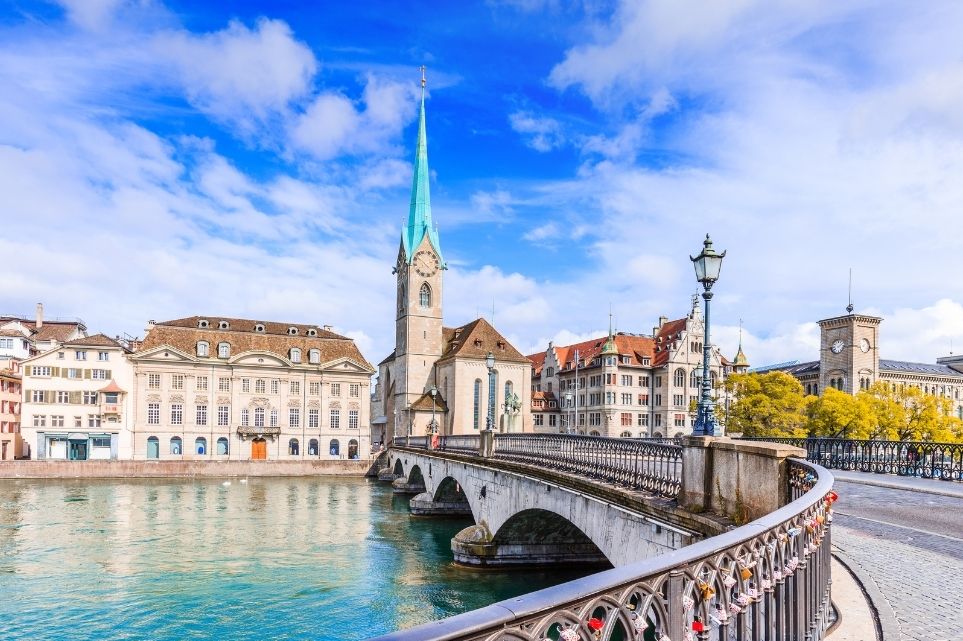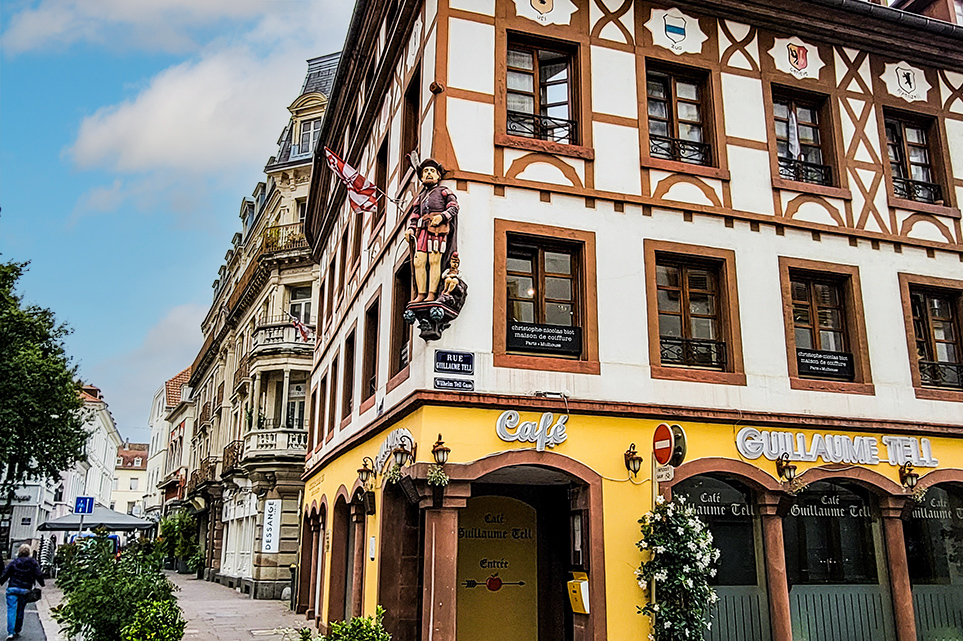
Arriving late afternoon, I was excited to explore the lively city of Budapest. Knowing little about the city other than the significant sites to visit, we could feel the positive vibes as we strolled the streets near our hotel. Every corner we walked, a unique and interesting piece of architecture fed our eyes with beautiful baroque, neoclassical, and art nouveau designs.
Budapest straddles the Danube River and is actually two cities: Buda, located on the west side, is considered classier, while Pest (pronounced ‘pesht’) is on the east side of the river. Thus, each side has its own personality.
From its turbulent past, you will find where history left its mark from the Habsburg royalty, the cruelty of WWII, or the enjoyment of the Ottomans in the thermal baths. No matter what street you take, you will find yourself immersed in the authentic atmosphere of the past.
Budapest is a beautiful blend of many cultures from across Europe sprinkled in with some of the most romantic cafes for a late afternoon coffee. Being centrally located in Europe and a budget-friendly destination, it’s not surprising it has become a tourist magnet.
SIGHTSEEING
Budapest Castle Hill
Visiting Castle Hill will take a full day to complete. The area is made up of cobblestone streets, jam-packed with landmarks, museums, and restaurants. Major attractions within the site are Matthias Church, Fisherman’s Bastion, Buda Castle (Royal Palace), Faust Wine Cellar, and the Funicular Railway, just to name a few.
The hill has been a strategic point for centuries in combating enemies. Today it serves as a place to get a great panoramic view of Pest and the Danube River. Many of the homes on the hill were built between the 17th-19th century making their architecture unique and interesting.
Tip: The best way to reach Castle Hill is to take bus No.16 or the funicular. Although the climb is steep, you can walk to the top of the hill.


Buda Castle
The grand Buda Castle stands tall above the city of Budapest. Today this Castle is also known as the Royal Palace and is home to numerous cultural institutes such as Hungarian National Gallery and the Budapest Historical Museum.
During the 14th century, King Bela IV built a shelter surrounded by walls to protect him from the Mongols, where the Buda Castle stands today. Today no evidence is left of the original structure. When King Matthias took control of the Castle, he added his style reflecting the times. During the occupation of the Ottomans, between 1541-1686, the Castle was destroyed. When Habsburg became the city’s new ruler, a new structure was built between 1714-1723 in Baroque style. Unfortunately, during WWII, the Castle was severely damaged once again. Reconstruction works started in 1950 following the classic style designed by Istvan Janaki.
- Hours: The courtyard is open 24/7 and to enter the Castle depends on which wing (or Museum) you plan to visit.
- Admission: It is free to enter castle grounds, but each wing that hosts a museum may charge a fee. To take a guided tour, it will cost 3,850 HUF (must be booked in advance)
- TIP: I recommend you take the funicular to get to the Castle. The cost to ride the funicular is 1,2000 HUF one way, 1,800 return
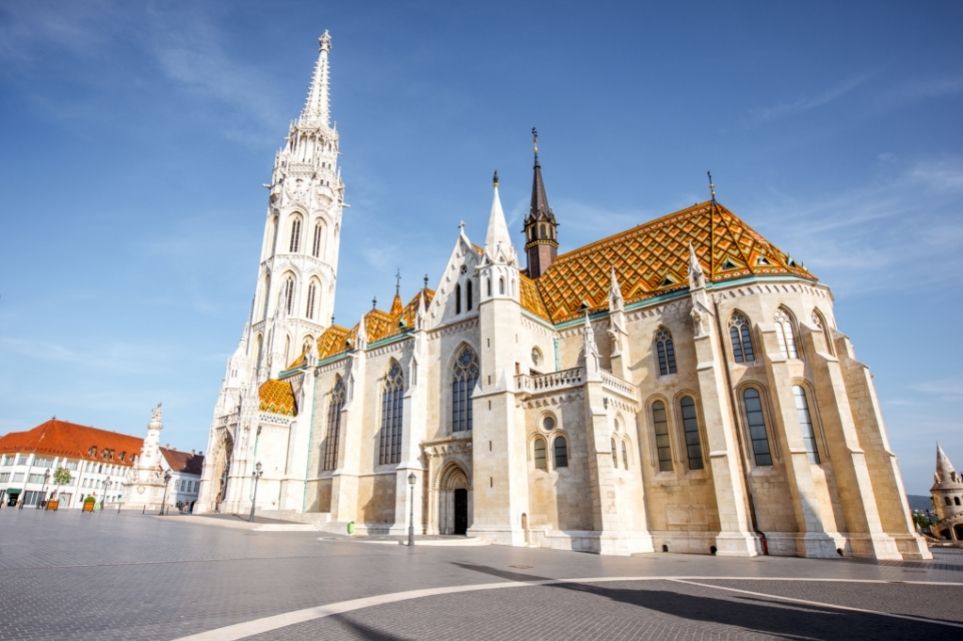
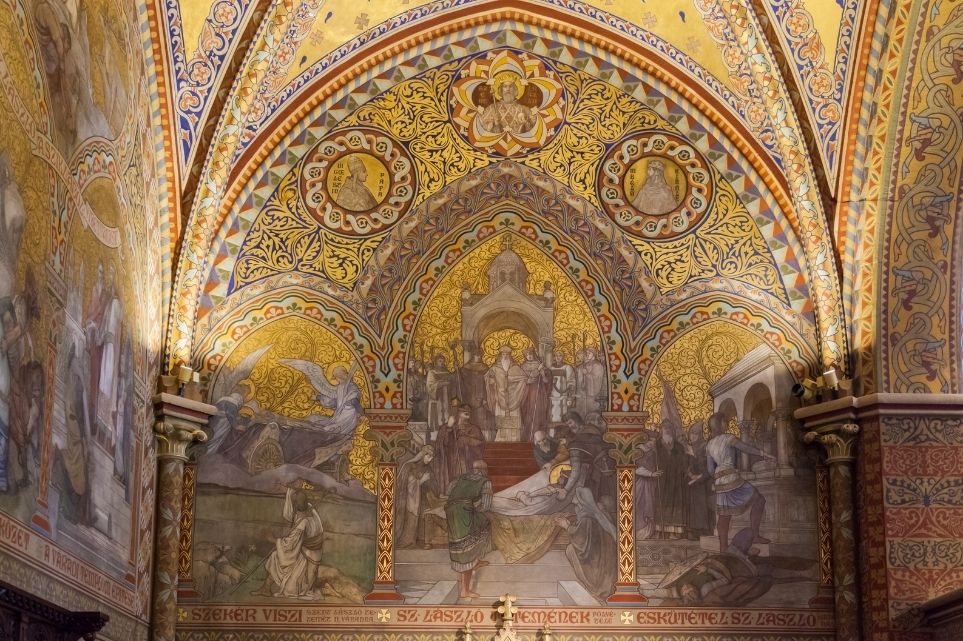
Matthias Church
Matthias Church is one of the most beautiful churches I have ever seen, built in Gothic style with a colorful tiled roof and decorative turrets. You will want to take a few minutes to admire the exterior of the building before stepping inside. The original church, named Church of Mary, was built in the 11th century, although it was destroyed by 1242. The church’s name was given from King Matthias Corvinus the Fair, who remodeled and expanded the building in the 15th century.
The inside of the church will take your breath away with the vaulted ceilings and ornate décor. In 1526 the Turks occupied Buda, turning the church into a mosque. When the Christians mercenary troops regained Buda Castle from the Turks, not much was left, and the church was reconstructed in Baroque style. Finally, in the early 19th century, it was restored to its original design of the Neo-Gothic style by Frigyes Schulek between 1873-1896. Today, the church hosts many concerts, ceremonies, and weddings.
- Hours: Mon.-Fri. 9:00 – 17:00, Sat. 9:00 – 13:00, Sun. 13:00 – 17:00
- Admission: 1,800 HUF (With a Budapest Card Plus, it is free!)
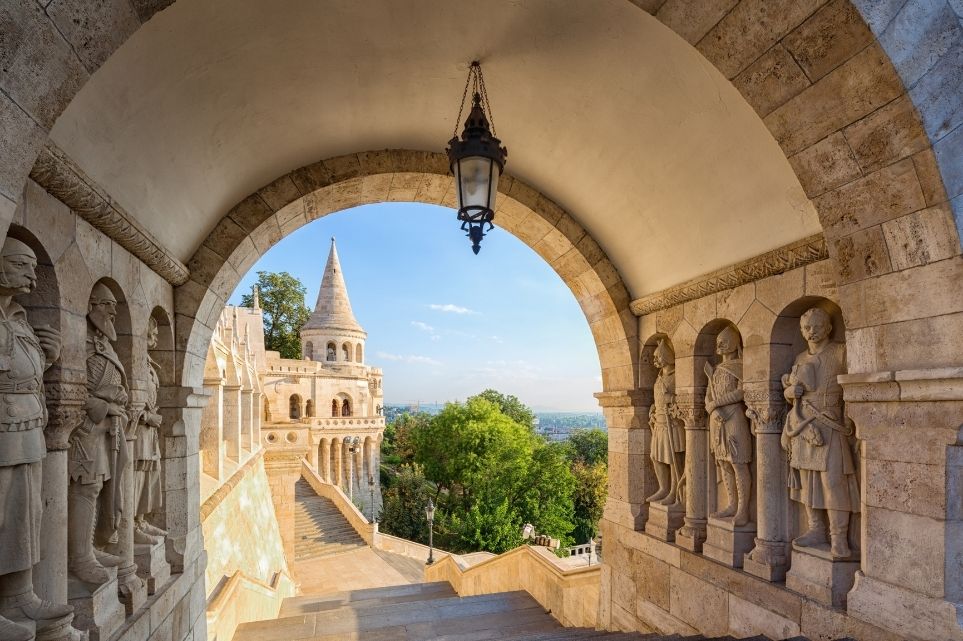
Fisherman’s Bastion
One of Budapest’s top attractions is the fairytale-looking Fisherman’s Bastion. It is considered one of the nicest UNESCO World Heritage sites in Hungary because of its promenade of the Danube and the views of the Chain Bridge and the Hungarian Parliament. Fisherman’s Bastion was built in 1895-1902 near the Matthias Church. The structure’s name suggests it was used to function as the protective walls manned by the fisherman of Buda. But in actuality, the structure has no historical value. However, during the renovation of the Matthias Church is was considered to be nice to have an impressive entrance to the medieval Castle district as well as a special place that would have a spectacular view of Budapest.
- Hours: Open daily 9:00 – 22:00
- Admission: Free, additional charge of 1,000 HUF to visit the upper turrets.
- TIP: The best time to visit is right when they open or at sunset.
Buda Tower
Buda Tower was once a part of the Maria Magdalena Church was built as the chapel for the Hungarian civilians in the 13th century. In the years following, it went through some difficult times. At one time, it served masjid for the Muslims during the Ottoman period. It was bombed severely during WWII.
Restoration work began in 1950, but the anti-church regime decided to demolish the church. So what you see today are the remains of the tower which reopened in 2017. You can climb 172 steps to the top, given a great view of Castle Hill.
- Hours: Open daily 10:00 – 18:00 (schedule may change in the winter months)
- Admission: 1,500 HUF
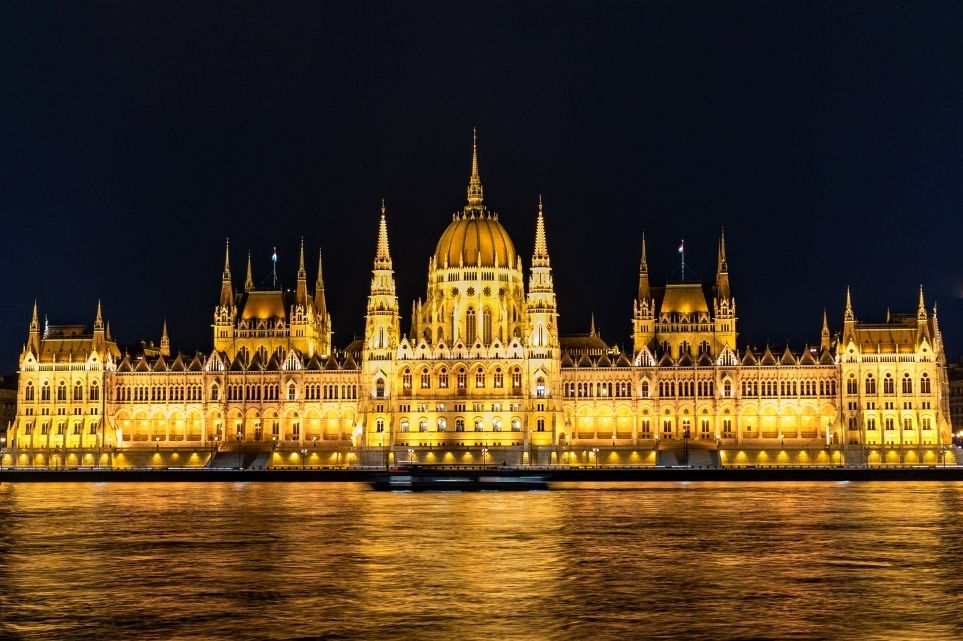
Hungarian Parliament Building
Knowns as one of the largest parliaments in the world, the Budapest Parliament building is located along the Danube River, where the Hungarian government conducts business. It has 691 rooms and is 268 m long and 123 m wide. After the three cities that make up the modern-day Budapest (Buda, Pest, and Obuda) united in 1873, a new parliament building was decided to be constructed, which took over 19 years to build. As a result, it is the tallest structure in Budapest and all of Hungary.
- Admission: EU Citizens 3,500 HUF, Non-EU Citizens 6,700 HUF
- Tips: Tours are offered, taking approximately 50 minutes. Book your Parliament tour in advance (at least a week). Tours are offered in English at 10 AM, 12 PM, 1 PM, 2 PM, and 3 PM. Guided Tours cost approximately 52 USD adult.
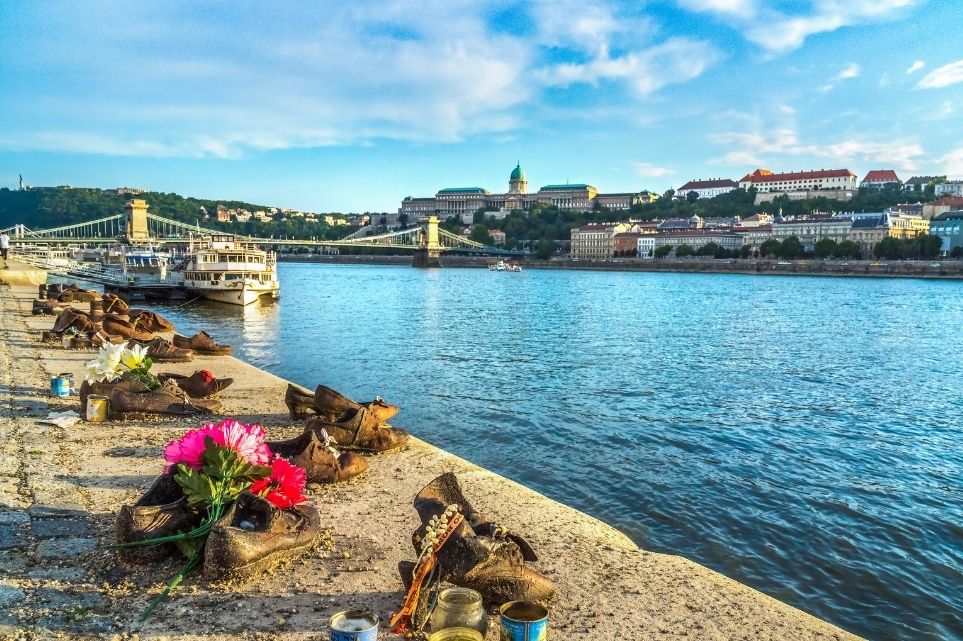
Shoes on the Danube River
As you stroll the Danube River, 60 pairs of iron shoes face the river in front of the Hungarian Parliament Building. The sobering’ Shoes of the Danube River is a memorial honoring the Jews who were ordered to take off their shoes and executed at the water’s edge of the Danube River. However, their shoes were a valuable commodity during WWII. Although the story of the memorial is terribly devastating, the monument is a beautiful tribute to remind us of those lives taken too soon.
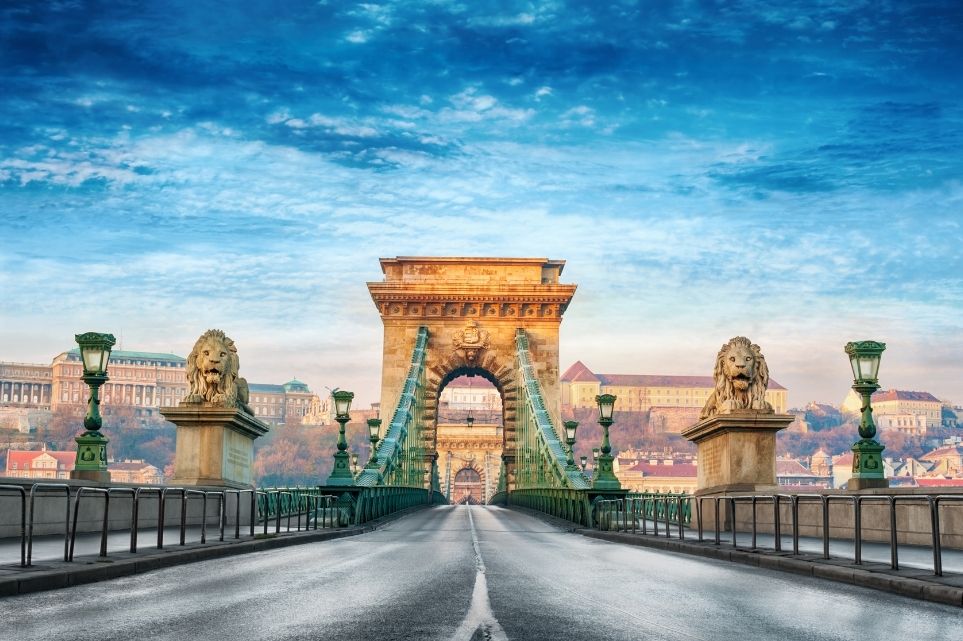
Chain Bridge
One of the most picturesque attractions is the Széchenyi Chain Bridge connecting Pest with Buda. This wrought-iron and stone suspension bridge is 375m in length and is the oldest bridge in Budapest. It opened in 1849, though it had to be rebuilt after World War II. The original bridge took twenty years to build.
Great Market Hall
My husband loves to visit local markets, so one of our must-see attractions is the Great Market Hall of Budapest. This enormous, colorfully tiled roof building towers over nearby apartments at the edge of the Danube River. Here, you will mostly find produce, meats, baked goods, spices such as paprika, and other souvenirs on the ground floor. On the upper floor are several restaurants, home goods stores, and souvenir shops.
- Hours: Closed on Sundays; Monday 6:00-17:00, Tuesday – Friday 6:00 – 18:00; Saturday 6:00 – 15:00.
- Admission: Free ( Food Tour options are available)
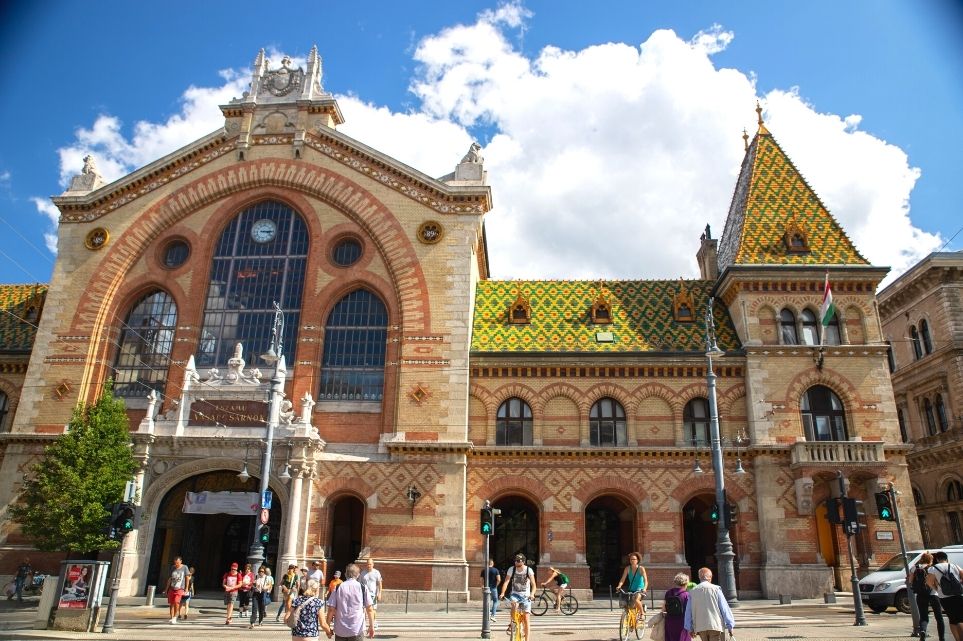
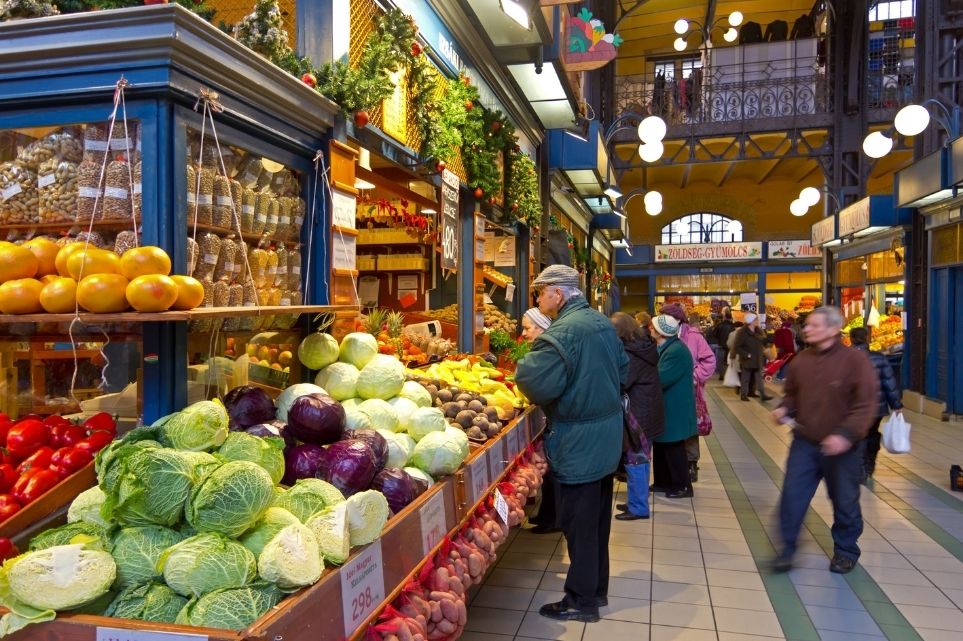
St. Stephen’s Basilica
Visit the largest church in Hungary, standing over 96 meters high, built in honor of Stephen, the first king of Hungary (975-1038). St. Stephen’s Basilica has lavish architectural features, stunning artwork displayed throughout, with dazzling marble and tall domes to admire. But, unfortunately, it took over 50 years for the building to be completed!
Take the elevator to the top for a panoramic view of the city! For a unique and moving musical experience, consider attending an organ concert held regularly within the cathedral.
- Admission: Entry to the main church is free or a small donation. Access to the top is 600 HUF
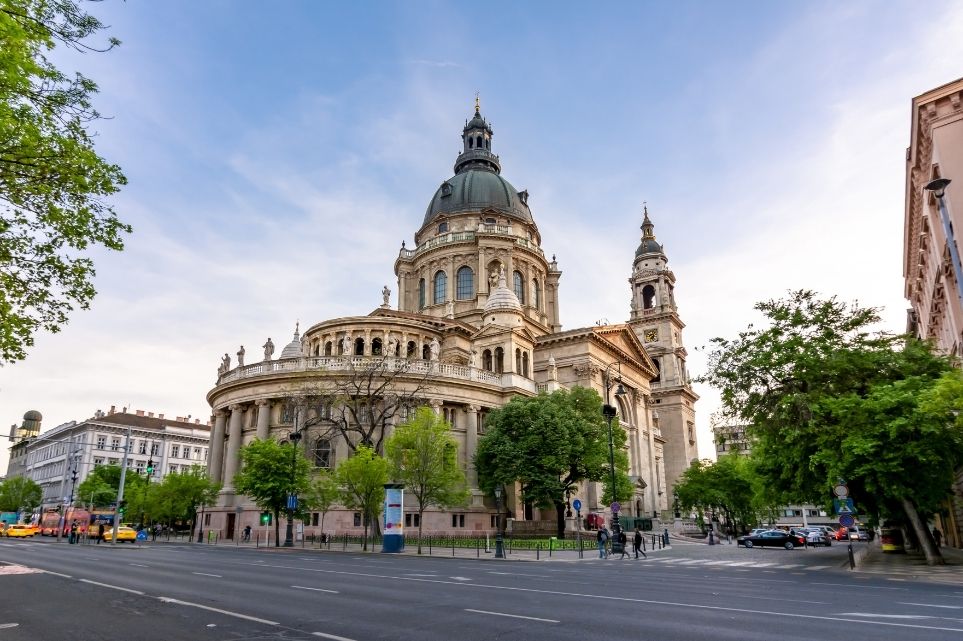
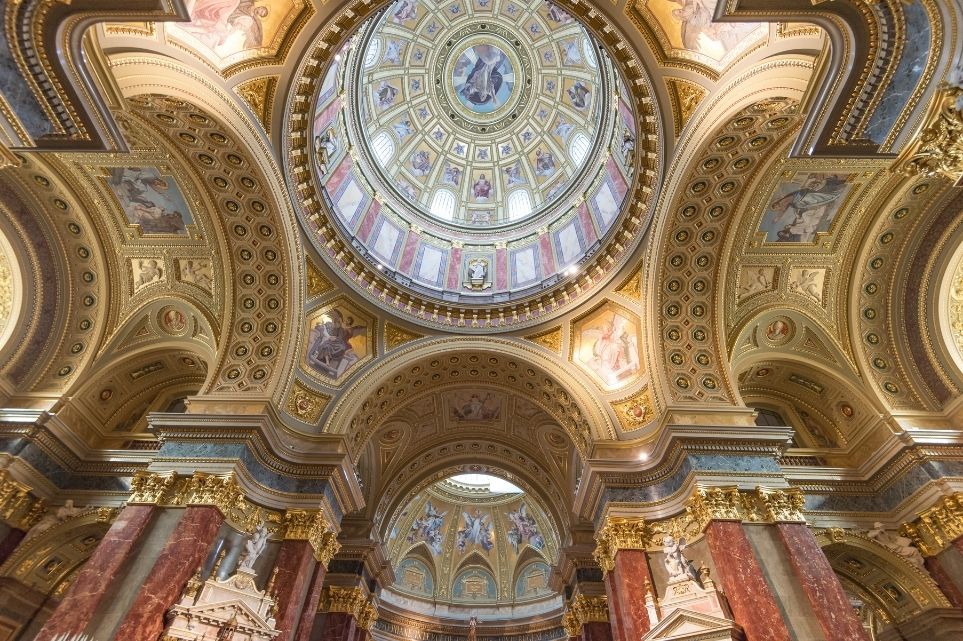
Dohány Street Synagogue
Explore the second-largest synagogue in the world at Dohány Street Synagogue (also known as the Great Synagogue), built-in 1854. Admire the unique architecture from the inside and out, best seen with a guided tour.
Also, check out Wallenberg Memorial Park (right behind the synagogue) and the nearby Hungarian Jewish Museum. Next door, visit the Jewish cemetery and pay your respects to those who perished in the Jewish ghetto during the holocaust.
For a more in-depth look at Jewish life in Budapest, I encourage you to take a Jewish Heritage Tour.
- Price: Standard visit including group tour in English, Italian, German, French, or Spanish: 5500 HUF ($17), hours vary month to month so check the website.
- Tips: A skullcap or head covering is required for entrance; you should be able to borrow one free of charge at the site.
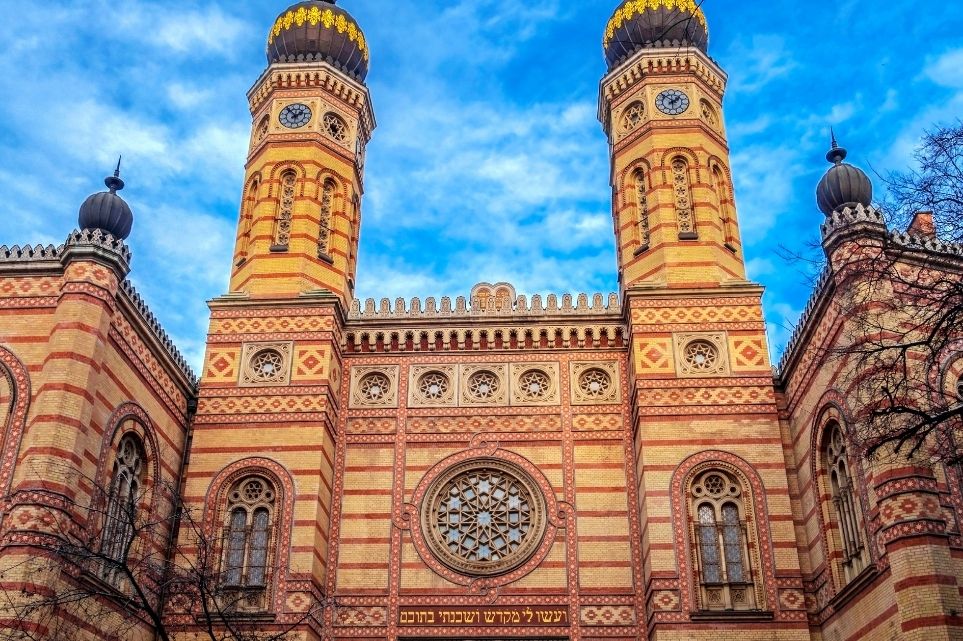
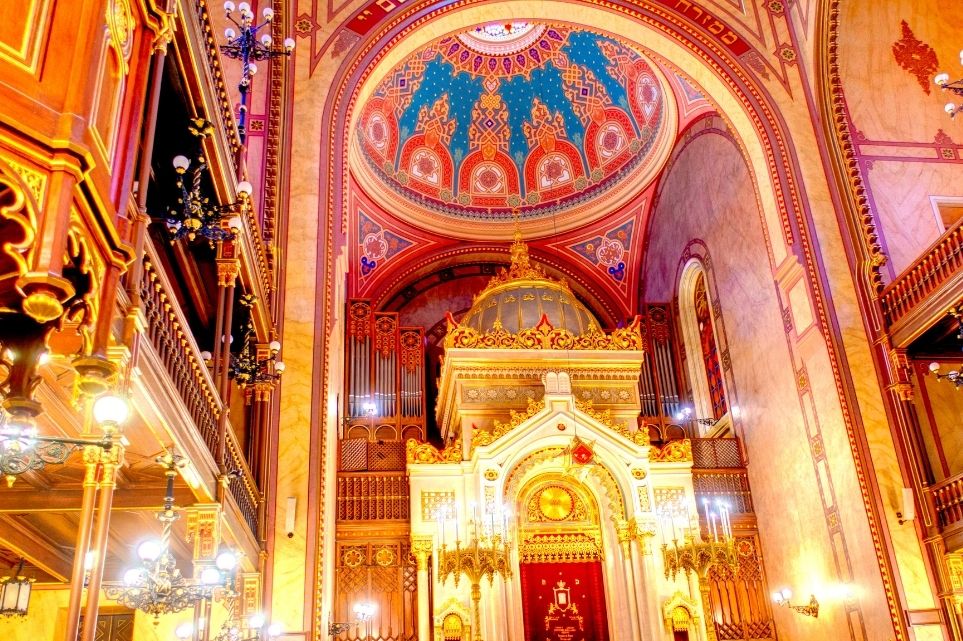
Hungarian State Opera
This neo-Renaissance masterpiece is spectacular to view from the outside as well as the inside. Although we did not tour the inside due to the renovations, it would be worth attending a performance while visiting. Check out their performance schedule to see if you can squeeze one in to see while in Budapest.
- Location: Andrássy u. 22, 1061, +36 1-81-47-100, opera.hu.
- TIP: Tours are available that cost around 3,500 HUF while performances range in price.
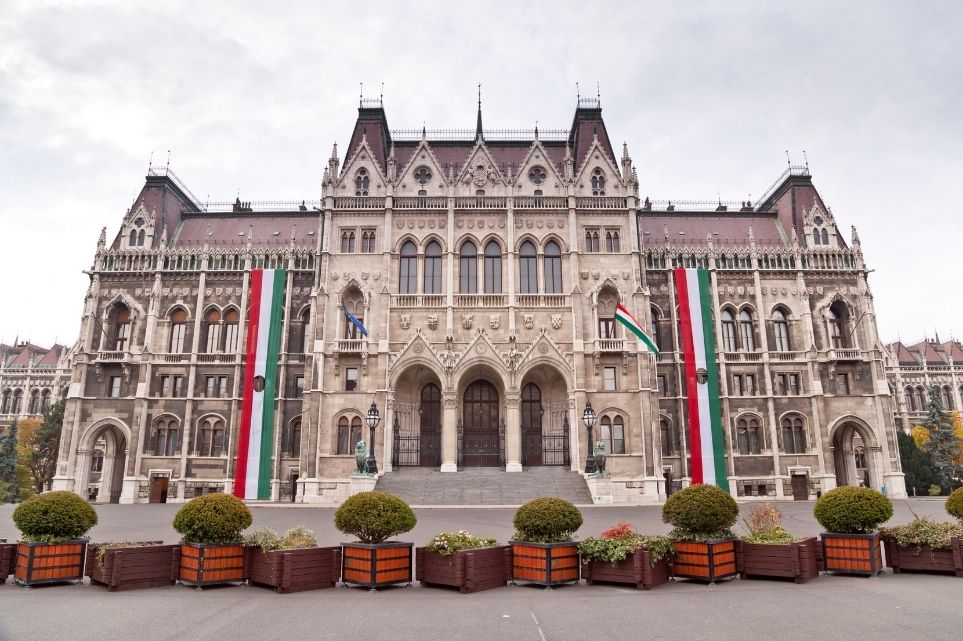
Party at the Ruin Bars
Located in Budapest’s District VII neighborhood (the old Jewish Quarter) in the ruins of abandoned buildings, stores, and lots is the Ruin Bars. After WWII, the area was left in ruins, and buildings were decaying, and so it became an underground bar scene (although no longer underground!) It is a “trendy” place for young people to hang out.
Here are some popular Ruin Bars to check out:
TIP: If you want to know more about the area and various bars and pubs, visit the website for more details.
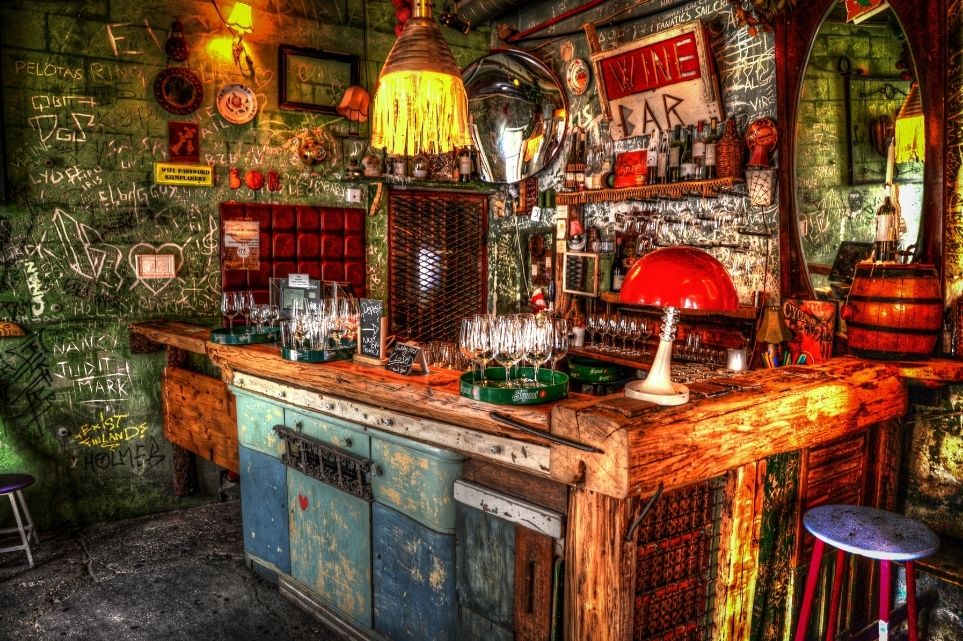
Gellért Hill
Gellert Hill is a dolomite rock that looms over the Danube River on the Buda side of Budapest. Due to the remains of cave dwellings, hot springs, this hill has been known to humans for centuries. The hill is named after Bishop Gellert, who was killed by the pagans who refused to convert to Christianity.
This hill offers a panoramic view of Budapest and the Danube River, making it a popular place to visit at sunset. In addition, there are several monuments worth checking out on the hill:
- The Citadella – This U-shaped fortress is about 220 meters long and 60 meters wide, with 4-meter-high walls. The Habsburg rulers built it after the fall of the Revolution in 1849. It served as a military stronghold to protect the city. Although you can’t visit the inside, it is an interesting structure to observe.
- Liberty Statue – This bronze statue was erected in 1947 to celebrate the Soviet forces defeat of the Nazis. It’s 14m tall and sits on a 26m pedestal. When Hungary adopted democracy in 1989, the transcription and meaning of the statue were changed to reflect such.
- The statue of Queen Elisabeth is dedicated to the Empress of Austria and Queen of Hungary, Elisabeth, who married Franz Joseph I, Emperor of Austria. Hungarians loved her for her kindness and non-conformist behavior. The statue is located near the Elisabeth Bridge.
- The statue of King Saint Stephen is dedicated to Hungary’s first king, who reigned from 1000 to 1038 CE. He helped establish the country as a Christian nation and provided a period of relative peace and stability.
- Szent Gellért Monument – This monument is dedicated to Saint Gerard, the first Bishop of Csanád in the Kingdom of Hungary in 1030 CE. Legend has it that he was nailed to cart or barrel, pushed down the hill, and then beaten to death at the bottom during the Vatha pagan uprising.
- Cave Church – Gellert Hill is home to many caves converted into a church in the 1920s but monks. These cave churches were also used as hospitals during WWII. The communist government sealed the entrance with concrete and executed the monks. It was reopened in 1989.
TIP: You can start at Gellert Hotel and walk up the hill, which is a bit steeper than starting at Elisabeth Bridge. This hike takes bout 20-30 minutes. You may also take the bus, which will drop you off at the top of the hill.
When visiting the Cave Church, make sure to take the audio guide to hear more about the history of the cave. The Cave Church hours: Friday and Saturday 9:30 – 16:30. The fee is 600 HUF (which include an audio guide)
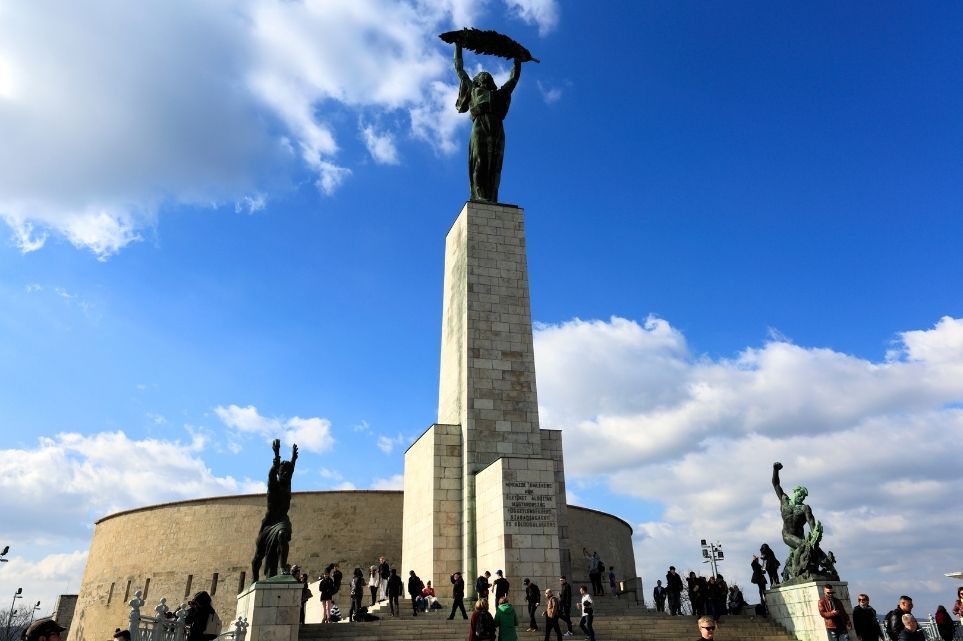
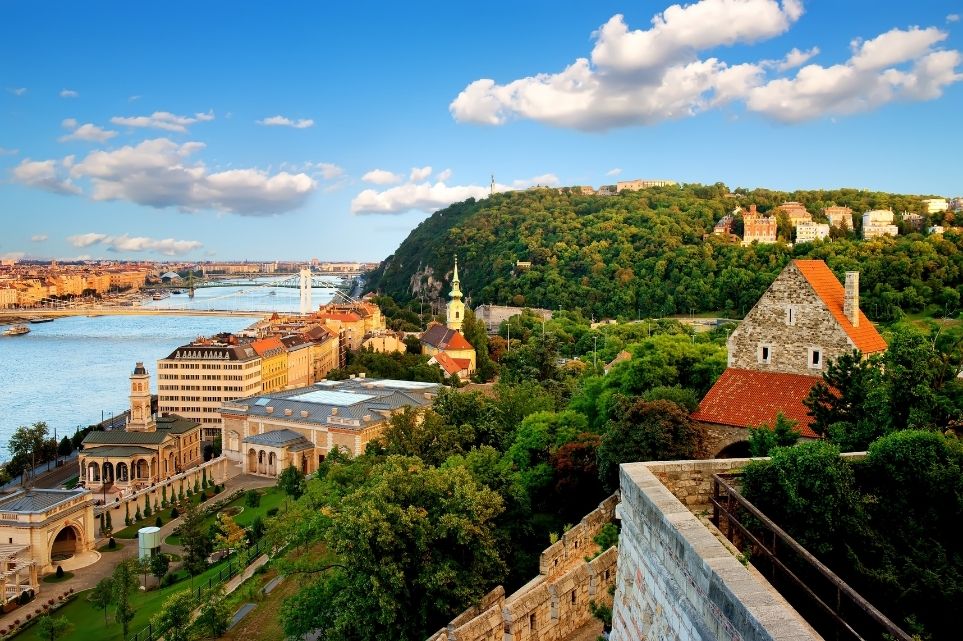
View from Gellert Hill
Heroes’ Square
Located at the end of Andrássy Avenue is Heroes’ Square, the largest square in Budapest. Considered a centerpiece with statues of Hungarian kings and other historical figures. The monument was built in 1896 to celebrate Hungary’s 1,000th anniversary.
The square is surrounded by monumental buildings such as The Museum of Fine Arts and Kunsthalle (Hall of Art) and the entrance into the City Park where you can visit the zoo, Széchenyi Baths, or wander through Vajdahunyad Castle.
TIP: If you take the Hop On-Hop Off Tour Bus, you will stop at this location.
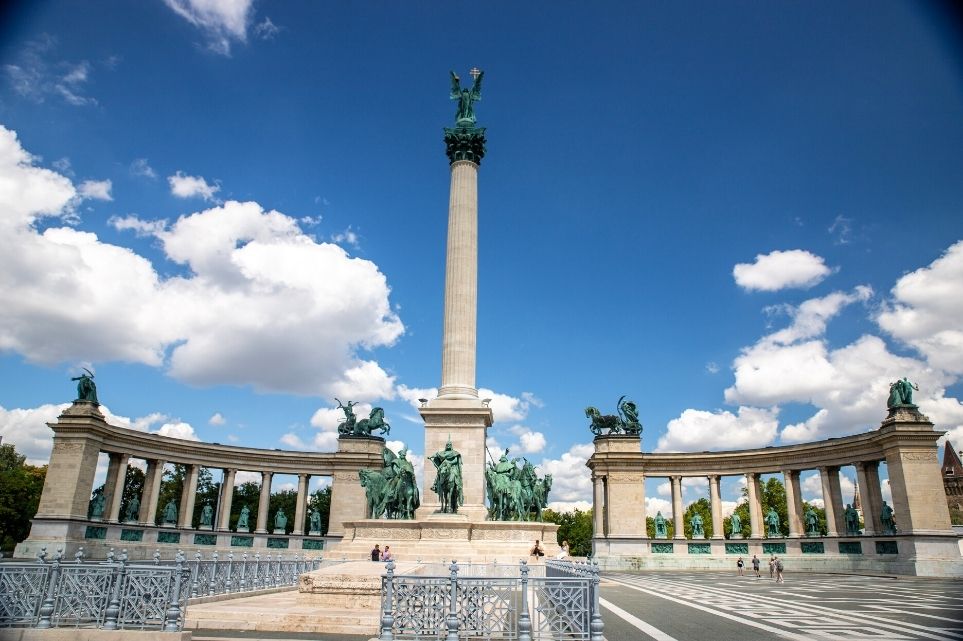
Heroes' Square

Thermal Baths
If you need to relax while traveling, visit one of the many thermal baths in Budapest. This experience will take you back in the time of the Hapsburgs and treat yourself as an Ottoman empire royal. Budapest has over 100 mineral hot springs that have enticed the Romans to create some of the most luxurious thermal spas.
At Heroes’ Square, you are within walking distance to the Széchenyi Baths, the largest and most famous in Europe. The lavishing yellow building was constructed in 1913 and is the most famous thermal spas for locals and tourists.
This experience is so unique and fun you must do while in Budapest!
These are some other baths around town:
Veli Bej Bath –- This is another Turkish-style bath with a luxurious feel, constructed in 1575, and is one of the oldest in town. It is an adult-only spa. Admission is approximately 3,500 HUF.
Dandár Bath – This is a no-frills bath that a lot of locals visit. It was opened in 1930. It has an art deco style and was recently refurbished. You can also enjoy massages, a diving pool, and a sauna. Admission starts at 1,980 HUF for a 2-hour ticket.
Gellért Baths – Located in Hotel Gellért, this spa was built in the early 1900s, later renovated in 2008. It is the most art deco spas with mosaic floors and stained-glass windows. Admission is approximately 5,300 HUF on weekdays and 6,200 HUF on weekends and holidays.
Rudas Spa – The least expensive of all the spas in Budapest is located at the foot of Gellért Hill. This spa dates back to 1550 during the Ottoman rule. There are six therapy pools here as well as a swimming pool. Admission starts at 4,900 HUF.
Tip: When visiting the baths, don’t forget your bathing suit and flip-flops. You can typically rent towels and lockers.
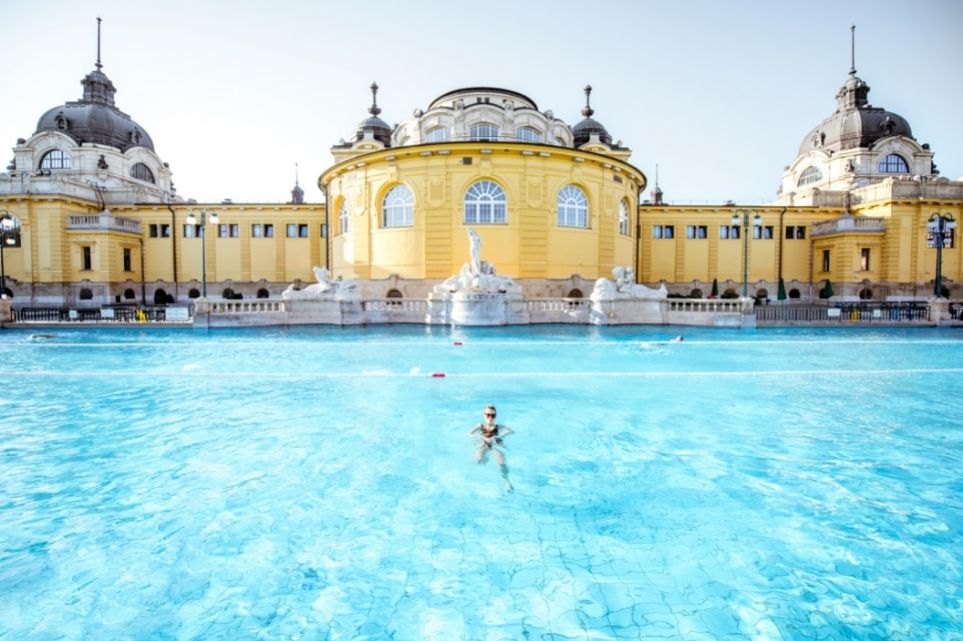
Vajdahunyad Castle
Located in the City Park is the Vajdahunyad Castle, considered one of the most romantic castles in Hungary and built-in 1896 by Ignác Alpár to celebrate the one thousand years since the medieval Magyars first settled on the plains of Pannonia. The Castle was initially intended to be a temporary exhibition; however, the attraction proved a hit with the locals and visitors that a permanent structure was built in 1904. Here you will see many architectural styles such as Gothic, Baroque, Renaissance, and Romanesque.
The Castle is naturally decorated with shady trees, pebble streets, and little ponds, giving it a fairy tale look. Hungarian Agriculture Museum is located inside the Castle, portraying more than 1000 types of bears, deer, and other hunted animal heads. The exhibits give you the history of Hungarian agriculture.
Jaki Chapel
On the grounds within the Vajdahunyad Castle is the Jaki Chapel. Jaki Chapel is monumental to the Benedictine monastery. Surviving many Ottoman battles, fires, and other types of destruction, it was restored in the late 19th century by Frigyes Schulek. Although the Jaki Chapel is a replica, it is a functioning Catholic chapel hosting many religious ceremonies throughout the year.
- TIP: A great way to explore the City Park and other significant sites is to take Bike Tour.
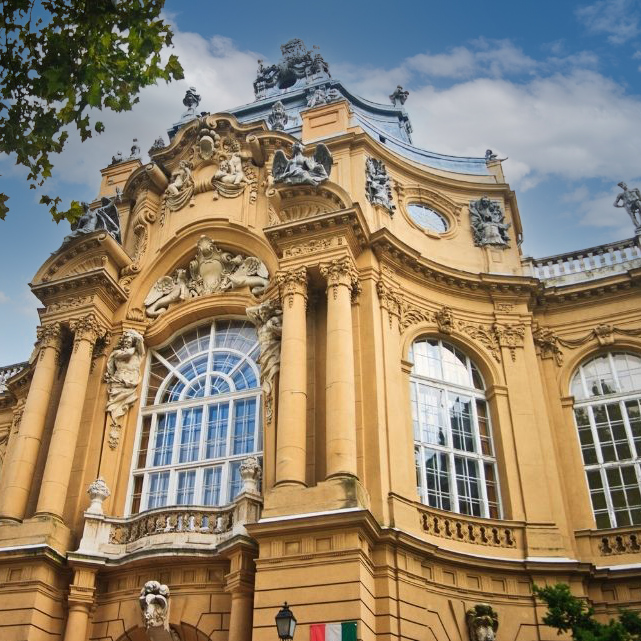
Hungarian Agriculture Museum
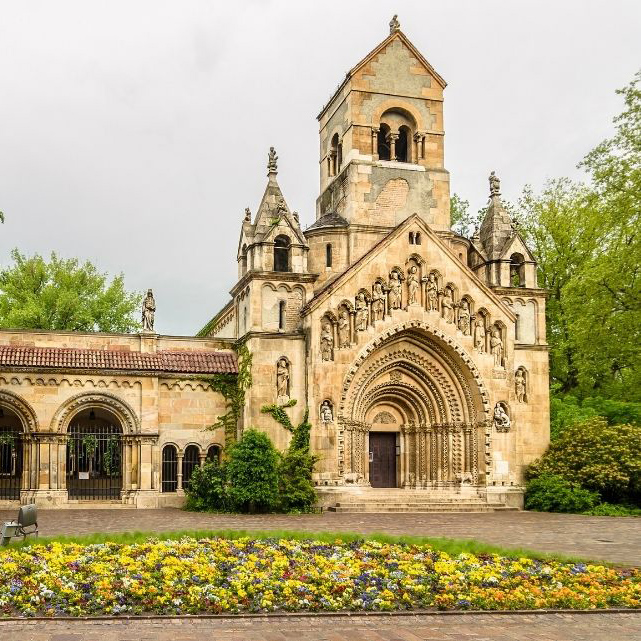
Jaki Chapel
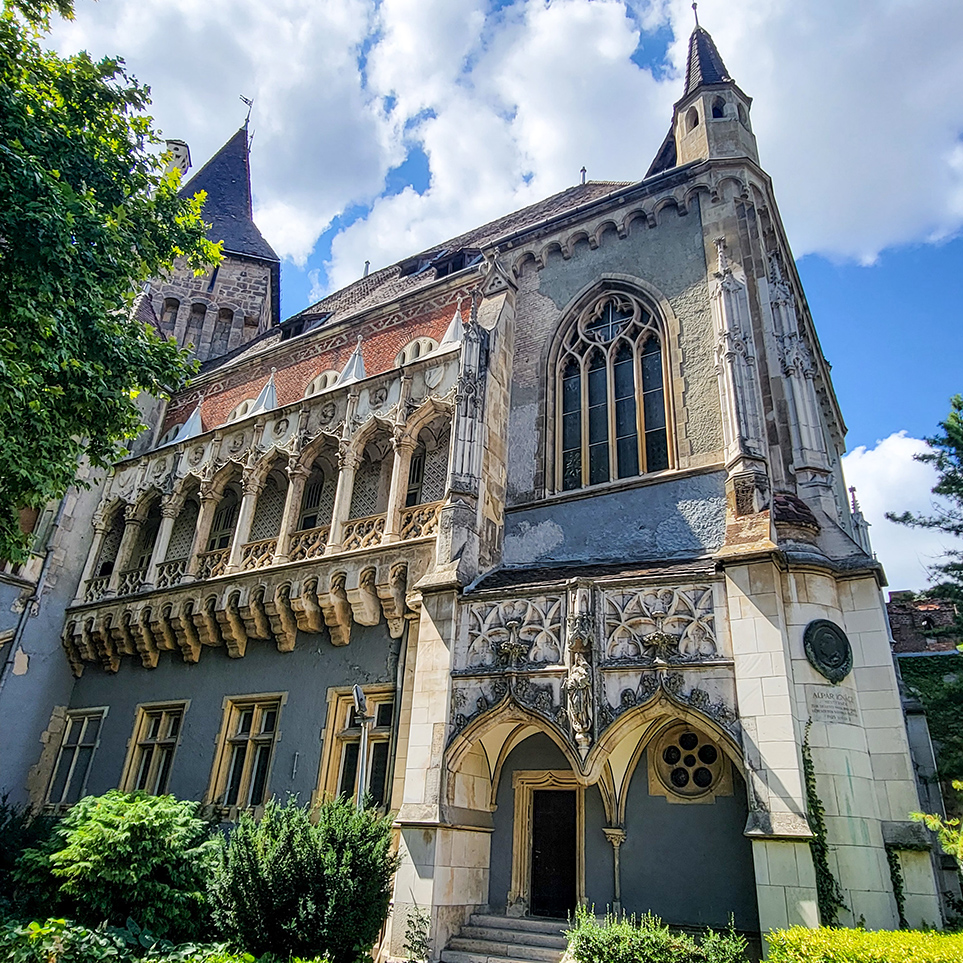
Vajdhunyad Castle
BUDAPEST MUSEUMS
Budapest History Museum
The Museum focuses on the turbulent history of Budapest before it was united as one. The museum artifacts are displayed over four floors of the Buda Castle, giving you a comprehensive understanding of the challenges the city has been through and how it became the city of Budapest today.
- Hours: Tue.- Sun. 10:00 – 18:00, Closed on Monday
- Admission: 2,400 HUF adult (if you wish to take pictures, there is an additional charge)
Hungarian National Gallery
Hungarian National Gallery is the national art museum. It is a collection of Hungarian art in all genres. Not only will you find paintings but sculptures and various collections of altarpieces from the 1400s.
- Hours: Monday closed; Tue.-Sun 10:00 – 18:00
- Admission: 3,200 HUF adult; an audio guide is available for 900 HUF
Hospital in the Rock
Under the Buda Castle district is one of the most interesting museums called the Hospital in the Rock. It was built as a secret military hospital, bomb shelter, prison, and nuclear bunker.
It is one of Hungary’s largest waxwork exhibitions. You also get to observe tools, medical equipment, furnisher, and other historical artifacts used during WWII. After the Hospital was closed in 1945, it continued to produce vaccines.
- Hours: Open daily 10:00 – 19:00
- Admission: 4,000 HUF adults; guided tours are available from 10:00 – 20:00 in English or Hungarian every hour. (30% discount with Budapest Card)
Other Things to See and Helpful Tips
If you plan to stay for four or more days, here are some other great activities to consider while in Budapest:
Cruise the Danube River
Taking a river cruise wasn’t high on my list of things to do, but it came with our Hop On-Hop Off package, and I must say it is well worth the experience. We did an evening cruise, and the castles and bridges were all lit, making the view beautiful. Budapest has many options when wanting to do a River Cruise.
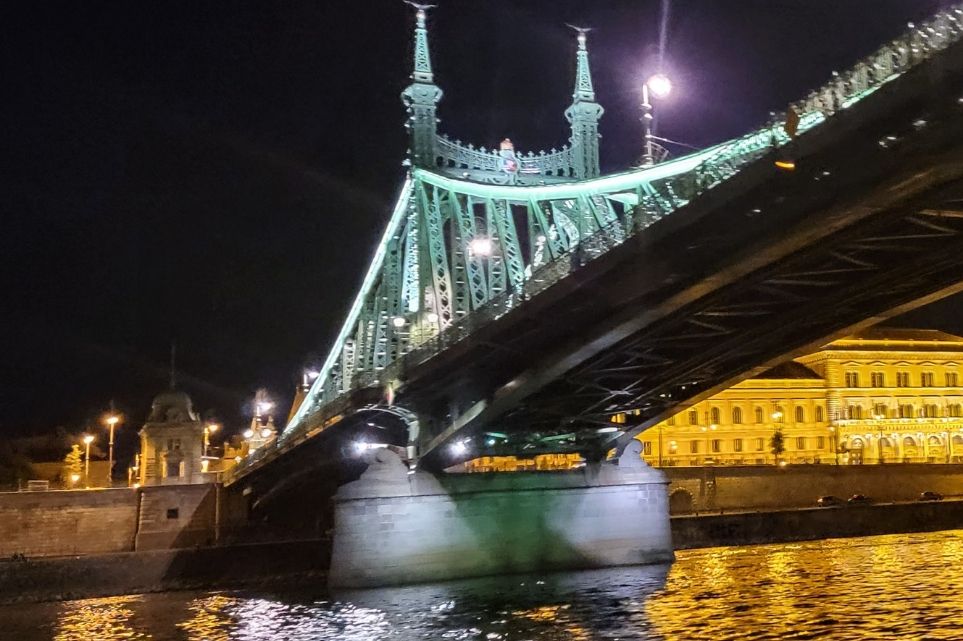
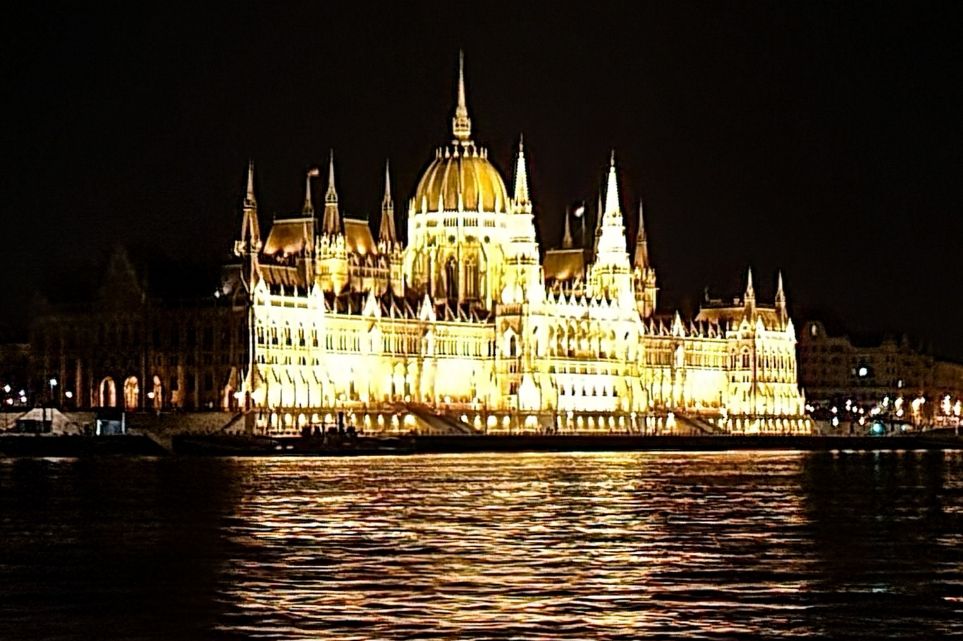
Visit an Island
For a unique experience, visit an island on the Danube. The best to consider is Margaret Island and Obuda Island.
Take a Tour
Beyond free walking tours, Budapest has tons of other great walking, food, and historical tours. They aren’t free, but you definitely get your money’s worth!
- Taste Hungary: Food tour (28,000 HUF per person)
- Pub Crawl Budapest: Free pub crawl
- Hop On- Hop Off Bus: One day ticket is 9725 HUF per person
- Wine Tour: Sample a bottle of Tokaji Hungarian wine
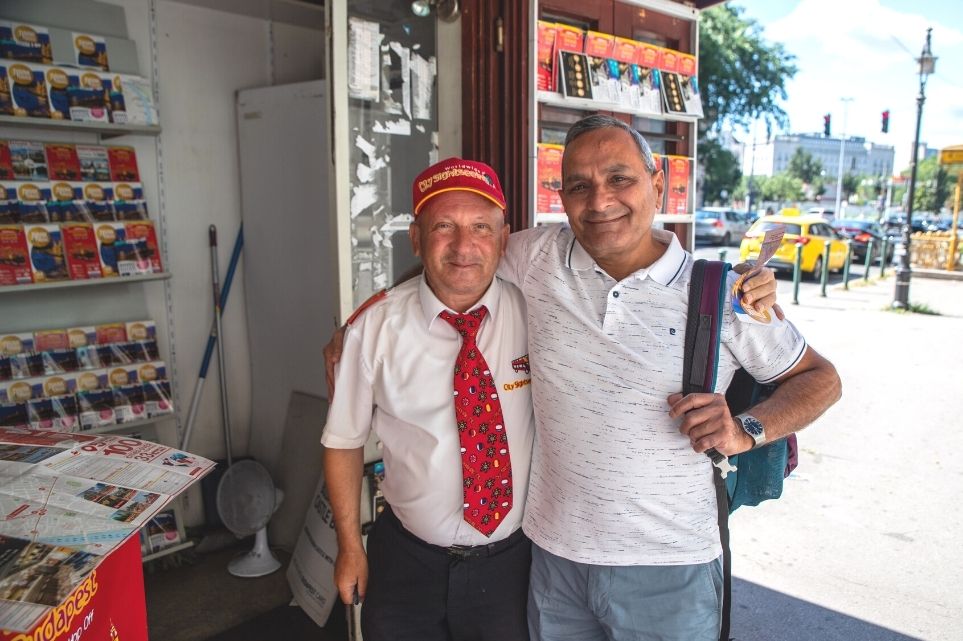
Hop On Hop Off Tour Operator
Budapest Card
A great way to see Budapest is to purchase the Budapest Card, which offers free public transportation, free entrance into the best museums, and discounts on many tours and shops to buy souvenirs.
Souvenir
Hungary is known to create some of the most beautiful crystals. We stopped at Ajka Crystal Brand Store to pick up a few souvenirs. Most of the crystal in the U.S.A. comes from Ajka Crystal such as Wedgwood, Tiffany’s, Rosenthal, and many more.
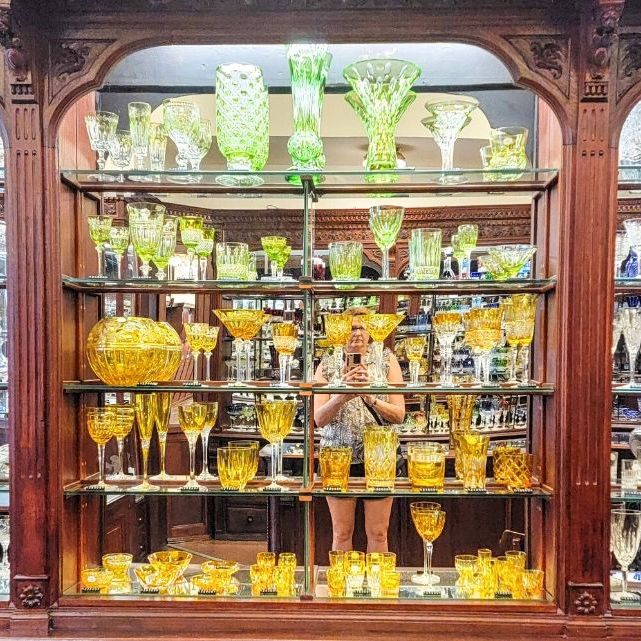
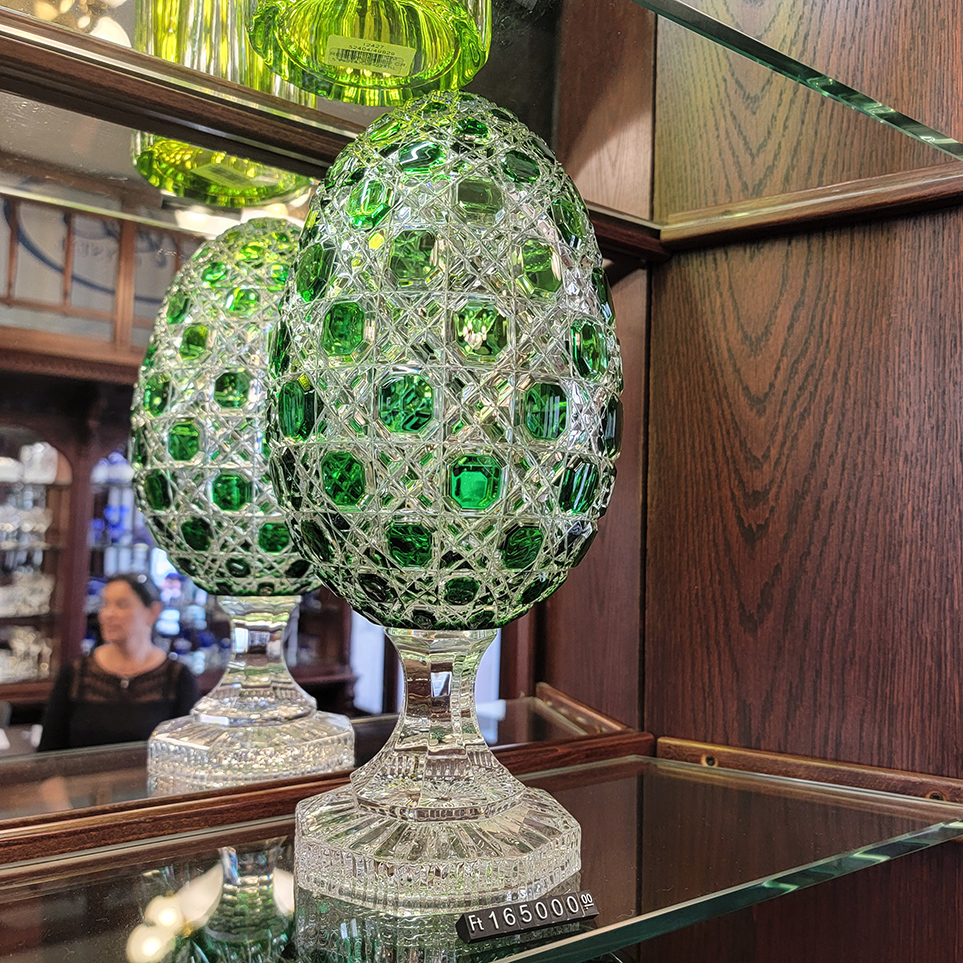
Where To Stay
The Ritz-Carlton, Budapest: With one of the best addresses in the city, this is the luxurious place to call home while visiting. Book a room with a view, and enjoy a comfortable stay right in the heart of the city.
Boutique Hotel Victoria Budapest is on the shores of the Danube River with stunning views. Buda Castle and the Chain Bridge are a short walk from the hotel. Modern and stylish offering massage services.
Hotel Moments Budapest is an upscale hotel located on Andrassy Avenue. This beautifully renewed four-star hotel offers an elegant feel as the rooms are tastefully decorated. Complimentary breakfast was included in our nightly rate.
Where To Eat
Ket Szerecsen: A traditional restaurant with Hungarian dishes and mostly known for their breakfast.
Leila’s Lebanese Restaurant: Offering authentic Lebanese food in a cozy setting with welcoming staff. All meats are 100% halal certified.

Leila's Lebanese Restaurant

Tom Yum Thai Restaurant
New York Cafe: If there is one spot worth going to, it’s indeed this. I can’t say the food is exceptional, but coffee and dessert are the way to go in this gorgeous space.
Tom Yum Thai Restaurant: Located in the city’s grand Andrassy Avenue, offering a wide range of Thai dishes such as chili-inflected spicy dish, stir-fries, over rice, and coconut curries.
Tanti: This is a Michelin-starred restaurant known for its classic bourgeois cuisine.
Pichler Gelato & Chimney Cake serves up some yummy sweets. The chimney cake was handmade right in the store, as you can watch the baker create these unique cakes. I highly recommend you stop here for a snack or a break from your busy sightseeing.
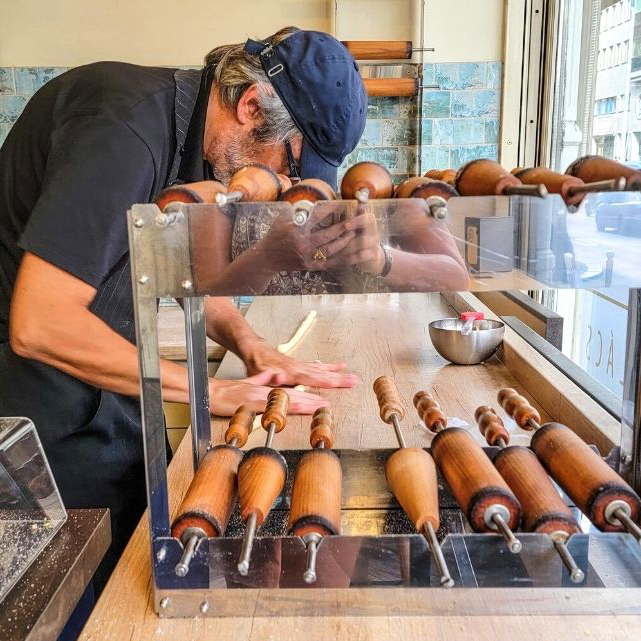
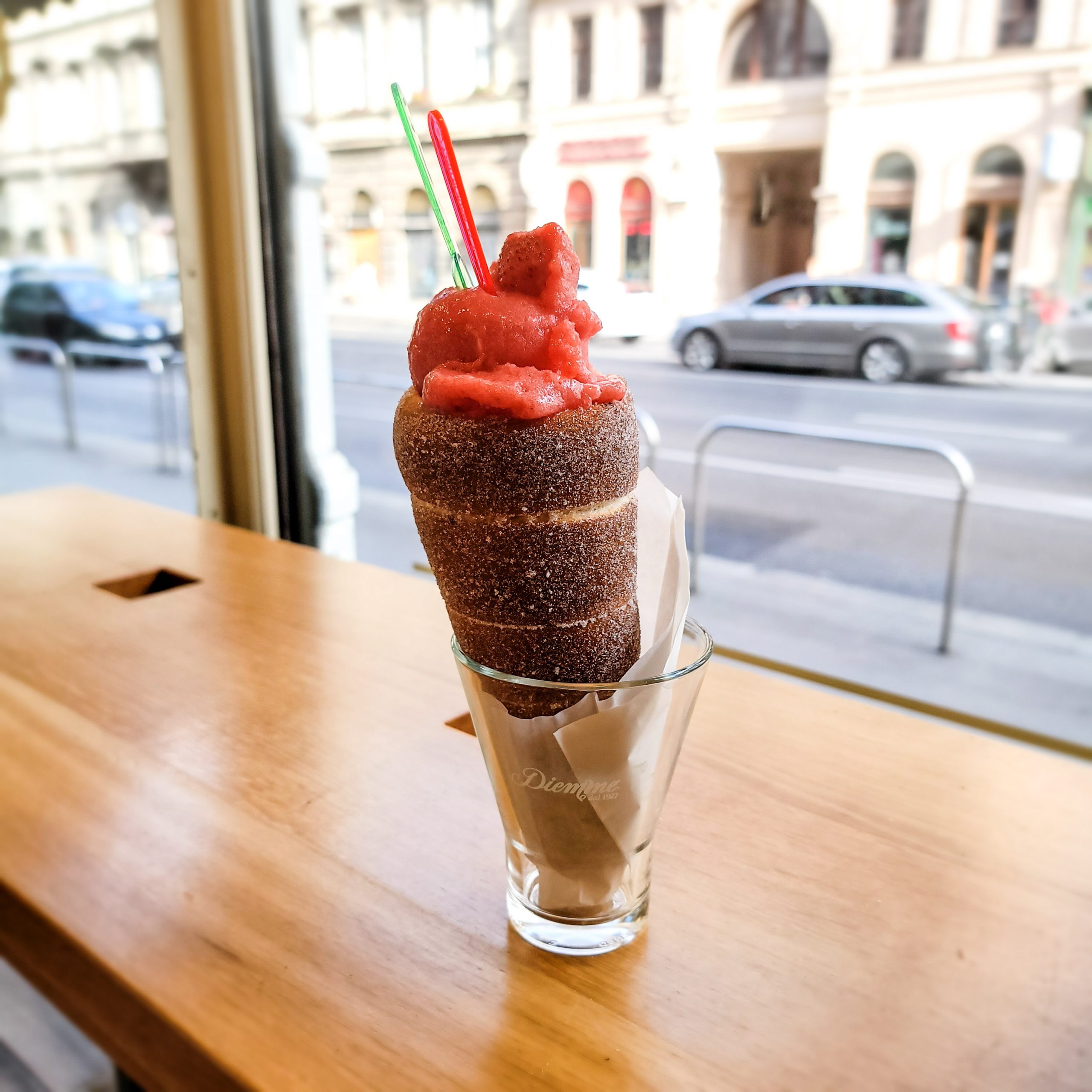
I found Budapest a fun, lively city that I would love to visit again. But, regardless of your reasons for visiting for its views, history, food, and bars, you will find an abundance of things to do in Budapest that will surely entertain you!
Enjoy your travels! Please read my blogs about other exciting places around the world at Traveling Lens Photography.
If you want to read more follow me on Facebook, Instagram, or Pinterest as I share my journey.
Happy Travels!




